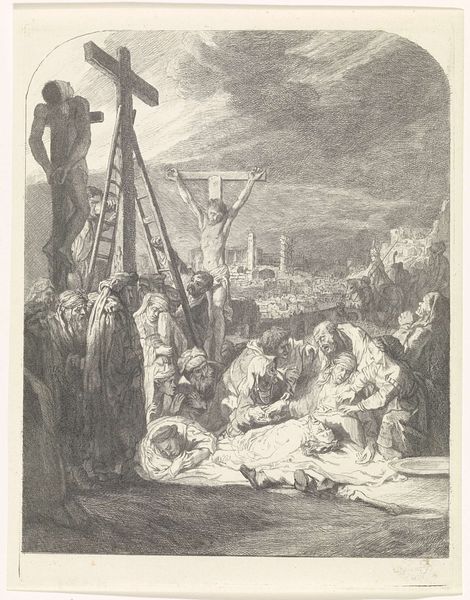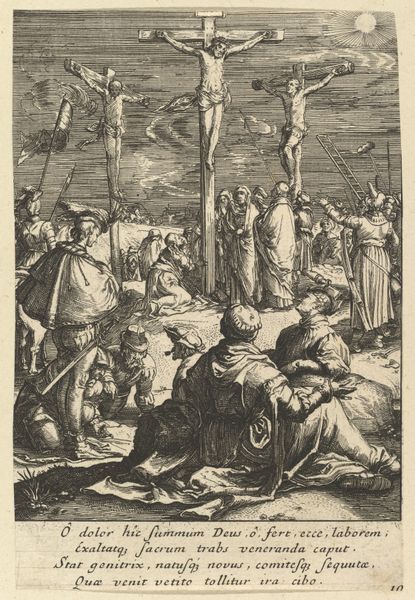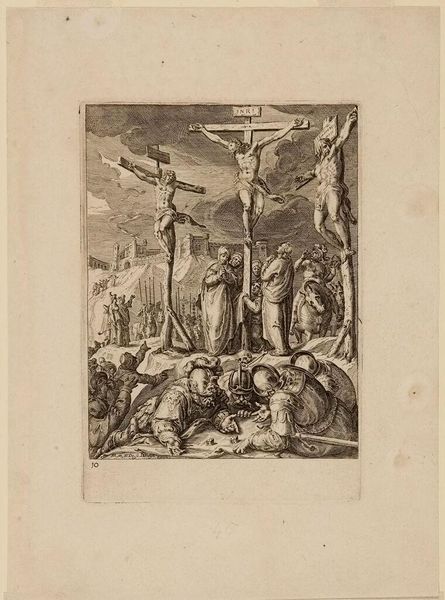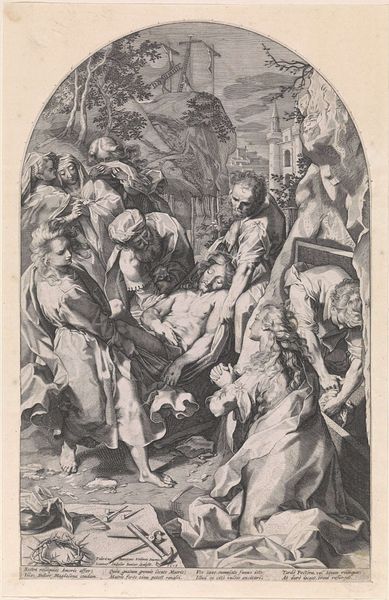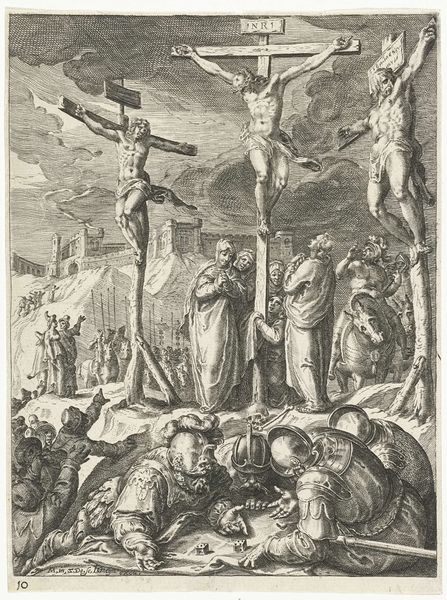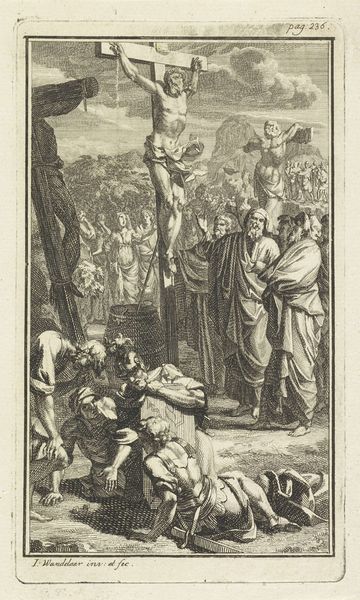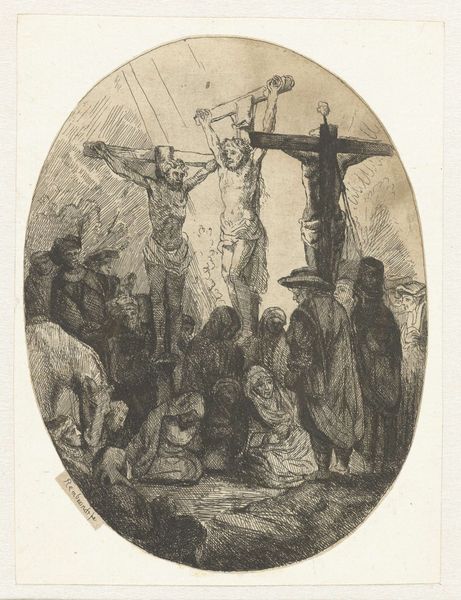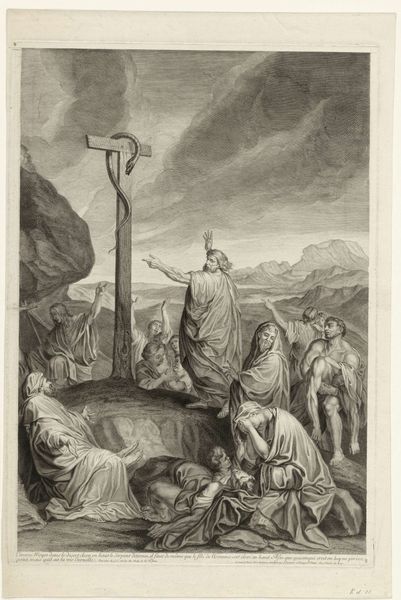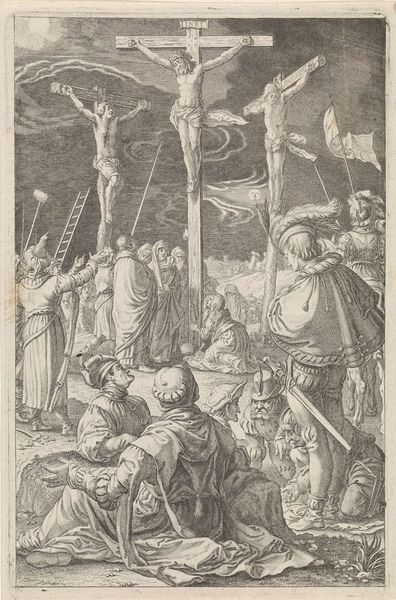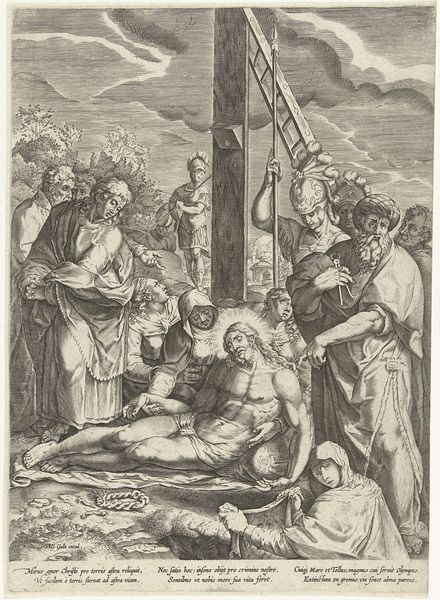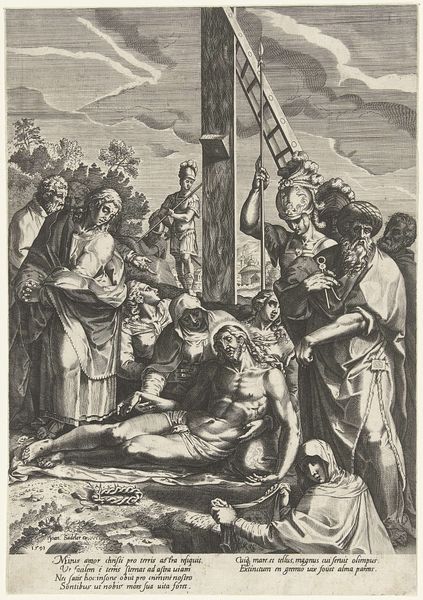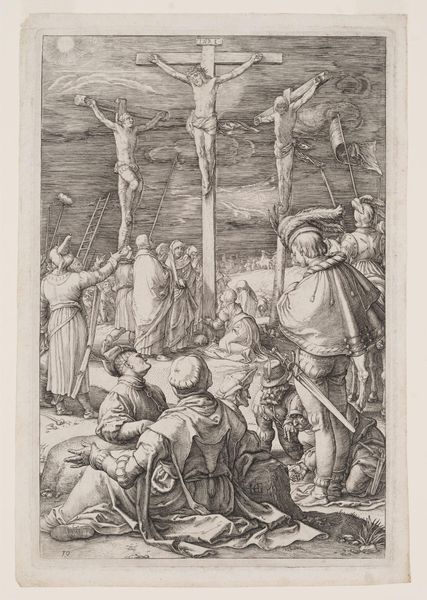
print, engraving
#
narrative-art
#
baroque
# print
#
pen illustration
#
figuration
#
history-painting
#
engraving
Dimensions: height 241 mm, width 196 mm
Copyright: Rijks Museum: Open Domain
Editor: Here we have Bernard Picart's "Bewening van Christus" from around 1730, an engraving housed in the Rijksmuseum. The sheer amount of grief radiating from the figures is overwhelming. What do you make of such a powerful depiction of mourning? Curator: It's more than just mourning, isn't it? Consider the power structures at play here. Picart created this work within the context of 18th-century Europe, a period of immense social stratification and religious control. This scene depicts profound suffering, but whose suffering matters, and why? Note the artistic emphasis on the central figures. How do you interpret this? Editor: It feels like it's highlighting Mary's grief as particularly important... perhaps in contrast to the suffering of those on the other crosses? Curator: Precisely. Whose pain gets acknowledged, and whose is erased or minimized? Religious narratives were powerful tools. And we see this reproduced in secular contexts today. Who benefits from these hierarchies? Editor: So you’re saying the image reflects the existing power dynamics rather than challenging them? Curator: It does both, perhaps inadvertently. While the composition centres Christ and his immediate circle, we, as viewers now, can question this centrality. Think about the narratives surrounding martyrdom. How are they constructed? And what sociopolitical functions do they fulfill? Does the depiction reinforce or challenge conventional roles of men and women in positions of authority? Editor: I hadn't considered how the emotional display might relate to gender roles and power... Curator: Exactly. By interrogating the visual language of mourning, we can unpack how societal values and beliefs are subtly, or not so subtly, perpetuated. It allows us to consider the political charge behind supposedly 'neutral' imagery. Editor: It’s fascinating to consider this print not just as a religious scene, but as a mirror reflecting and possibly reinforcing the values of its time. Thanks for pointing that out. Curator: Absolutely. Questioning art history invites reflection on our present. What echoes do you see today?
Comments
No comments
Be the first to comment and join the conversation on the ultimate creative platform.
